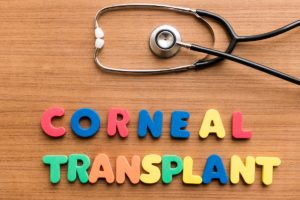When Does a Corneal Transplant Become Necessary?
- Posted on: Dec 14 2021
 The cornea is the transparent front portion of the eye. It permits light to enter and focus on the retina. If this crystal-clear lens is injured, swollen or diseased, you may experience reduced vision or blindness. In serious instances, a corneal transplant may be necessary to restore vision. New York City ophthalmologist Dr. Gregory Pamel is a highly skilled cornea transplant surgeon. Read on as Dr. Pamel discusses when a corneal transplant may be necessary.
The cornea is the transparent front portion of the eye. It permits light to enter and focus on the retina. If this crystal-clear lens is injured, swollen or diseased, you may experience reduced vision or blindness. In serious instances, a corneal transplant may be necessary to restore vision. New York City ophthalmologist Dr. Gregory Pamel is a highly skilled cornea transplant surgeon. Read on as Dr. Pamel discusses when a corneal transplant may be necessary.
Corneal Opacity
Corneal opacity is when the cornea becomes scarred, preventing light from passing through to the retina. It can result from injury, infection or other disorders. Corneal opacity can result in the cornea appearing white or cloudy and can lead to partial or total vision loss. In severe cases of corneal opacity, a corneal transplant may be necessary.
Keratoconus
Keratoconus is a disease that affects the structure of the cornea. As the disease progresses, the cornea becomes cone-like and thinner. As the curvature of the cornea increases, it leads to progressive loss of sight.
Keratoconus typically begins in the patient’s teenage years and continues into the patient’s mid-30s. The cause of keratoconus is unknown.
Initially, eyeglasses may be used to treat keratoconus. As the disease progresses, a patient may need to use contact lenses. In the advanced stages of keratoconus, a patient may need a corneal transplant. Keratoconus is one of the leading reasons patients undergo corneal transplants.
Pseudophakic Bullous Keratopathy
Corneal edema is swelling of the cornea caused by a buildup of fluid in the cornea. Pseudophakic bullous keratopathy is a condition that results in the cornea becoming permanently swollen. It is a rare postoperative condition following cataract surgery with intraocular lens implants. It occurs when the cells that line the innermost layer of the cornea (the corneal endothelium) are permanently injured.
The corneal endothelium is a barrier that pumps fluid out of the cornea, keeping it crystal clear and thin. When injured, these cells are no longer able to perform this function. This causes a buildup of fluid in the cornea, resulting in swelling and hazy or blurred vision.
Unfortunately, a patient with pseudophakic bullous keratopathy will not be able to improve their vision with medication, eyeglasses or contact lenses. In cases of pseudophakic bullous keratopathy, a corneal transplant may be necessary to restore vision. In most instances, corneal transplants for pseudophakic bullous keratopathy are highly successful and result in corneas that are able to remain crystal clear.
Fuchs’ Endothelial Dystrophy
Fuchs’ endothelial dystrophy is a condition that is caused by a gradual deterioration of the corneal endothelial cells. Initially, a patient may notice glare around lights or have difficulty driving at night. As the condition progresses and fluid continues to build up, patients may notice vision fluctuations. These fluctuations are typically worse in the morning and may improve throughout the day. Eventually, the patient’s vision will no longer fluctuate. Instead, it will become permanently distorted. Corneal transplant surgery can help patients with corneal swelling from endothelial cell loss.
To learn more about corneal transplant surgery, schedule an appointment with Dr. Pamel at his Manhattan or Astoria office by contacting Pamel Vision & Laser Group today.
Posted in: Corneal Transplant




